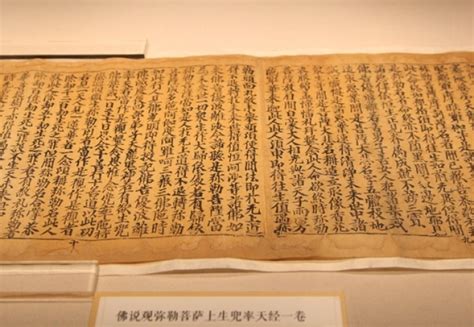buddhism in excavated chinese texts comparisons to be made between the excavated Chinese and Tibetan tantric Buddhist . Chinese manufacturers offer mini hydraulic excavators ranging from 1-10 metric tons, with digging depths spanning 4-13 ft. Some current models buyers can find at US dealers include: XCMG Mini Excavators. XE80U – 8-ton model. XE215 – 7.5-ton, up to 23hp. XE135W – 3.5-ton wheeled model. Zoomlion Mini Excavators. ZE230 – 8.5-ton excavator.
0 · chinese buddhist translations
1 · chinese buddhist texts
2 · chinese buddhism in english
3 · buddhist writings in china
4 · buddhist writings examples
5 · buddhist canons in china
The 38-year-old man and 55-year-old woman were working near the affected area, the 32nd Great Wall. They dug a "big gap" by widening an existing cavity of the Great Wall so that their excavator.
A large number of fragments of Chinese Buddhist manuscripts were excavated at the niins of .
The earliest extant Chinese Buddhist manuscript the Buddhasaṅgīti-sūtra was excavated at .Subsequently, translation into Chinese created what is known as the Chinese Buddhist canon, .From the second century CE to the tenth, Chinese Buddhists engaged in the greatest .
comparisons to be made between the excavated Chinese and Tibetan tantric Buddhist .for exploration with respect to Northern Qi Buddhism and Buddhist art. The texts are .A large number of fragments of Chinese Buddhist manuscripts were excavated at the niins of Buddhist monasteries in Turfan and adjacent oases. They are now preserved at the Akademie der Wissenschaften der DDR inThe earliest extant Chinese Buddhist manuscript the Buddhasaṅgīti-sūtra was excavated at Toyuq in Turfan. It is dated the 6th year of the Yuankang era (296 CE) during the Western Jin Dynasty (266–316 CE).
Subsequently, translation into Chinese created what is known as the Chinese Buddhist canon, which was and still is normative in Japan, Korea, and Vietnam, but other societies, especially Tibet and the Tangut empire, reacted differently by undertaking translations.From the second century CE to the tenth, Chinese Buddhists engaged in the greatest translation project in the history of the world: the translation of a vast corpus of Buddhist texts from Indian languages into Chinese. What is Chinese Buddhist Writing? Starting with haphazard translations of Indian Sutras and culminating in majestic works of literature and philosophy, texts written in Chinese characters have long been crucial to the development of Buddhism in China—and by extension all of East Asia. But Sanskrit and Pali are very different languages from .
comparisons to be made between the excavated Chinese and Tibetan tantric Buddhist manuscripts from Dunhuang²I focus on a single unattested and unattributed Chinese visualisation (Chin.for exploration with respect to Northern Qi Buddhism and Buddhist art. The texts are painstakingly engraved into the monumental faces of cliffs and cave walls after preparation of the stone surface by cutting and grinding. Abstract The earliest extant Chinese Buddhist manuscript the Buddhasaṅgīti-sūtra was excavated at Toyuq in Turfan. It is dated the 6th year of the Yuankang era (296 CE) during the Western Jin.An image of Tangut civilization thereby created is detached from historical reality as it emerges from the excavated texts, which reveal an overwhelming domination of Buddhist materials over the so called "secular" texts.
This article delves into the literature sources and historical origins of the initial section of the Qisha Canon, a renowned block-printed Chinese Buddhist canon carved in the greater Hangzhou region during the Song and Yuan dynasties.
A large number of fragments of Chinese Buddhist manuscripts were excavated at the niins of Buddhist monasteries in Turfan and adjacent oases. They are now preserved at the Akademie der Wissenschaften der DDR inThe earliest extant Chinese Buddhist manuscript the Buddhasaṅgīti-sūtra was excavated at Toyuq in Turfan. It is dated the 6th year of the Yuankang era (296 CE) during the Western Jin Dynasty (266–316 CE).Subsequently, translation into Chinese created what is known as the Chinese Buddhist canon, which was and still is normative in Japan, Korea, and Vietnam, but other societies, especially Tibet and the Tangut empire, reacted differently by undertaking translations.
chinese buddhist translations
From the second century CE to the tenth, Chinese Buddhists engaged in the greatest translation project in the history of the world: the translation of a vast corpus of Buddhist texts from Indian languages into Chinese. What is Chinese Buddhist Writing? Starting with haphazard translations of Indian Sutras and culminating in majestic works of literature and philosophy, texts written in Chinese characters have long been crucial to the development of Buddhism in China—and by extension all of East Asia. But Sanskrit and Pali are very different languages from .
comparisons to be made between the excavated Chinese and Tibetan tantric Buddhist manuscripts from Dunhuang²I focus on a single unattested and unattributed Chinese visualisation (Chin.
for exploration with respect to Northern Qi Buddhism and Buddhist art. The texts are painstakingly engraved into the monumental faces of cliffs and cave walls after preparation of the stone surface by cutting and grinding. Abstract The earliest extant Chinese Buddhist manuscript the Buddhasaṅgīti-sūtra was excavated at Toyuq in Turfan. It is dated the 6th year of the Yuankang era (296 CE) during the Western Jin.An image of Tangut civilization thereby created is detached from historical reality as it emerges from the excavated texts, which reveal an overwhelming domination of Buddhist materials over the so called "secular" texts.
chinese buddhist texts
case 1825b skid steer for sale

bobcat skid-steer model numbers

chinese buddhism in english
Browse a wide selection of new and used TAKEUCHI Mini (up to 12,000 lbs) .
buddhism in excavated chinese texts|chinese buddhist texts